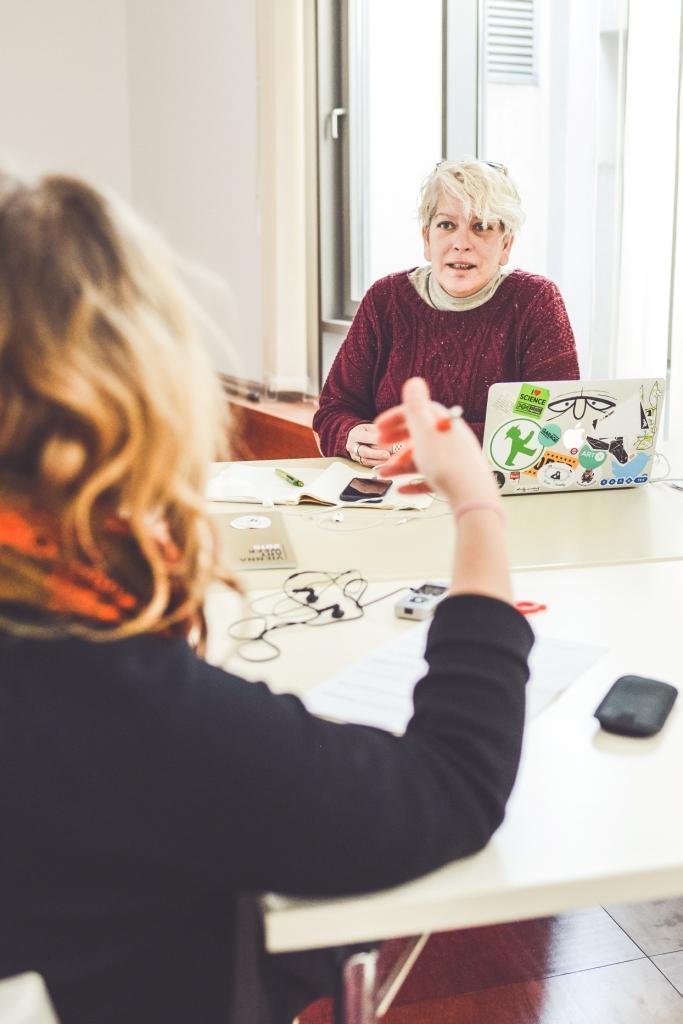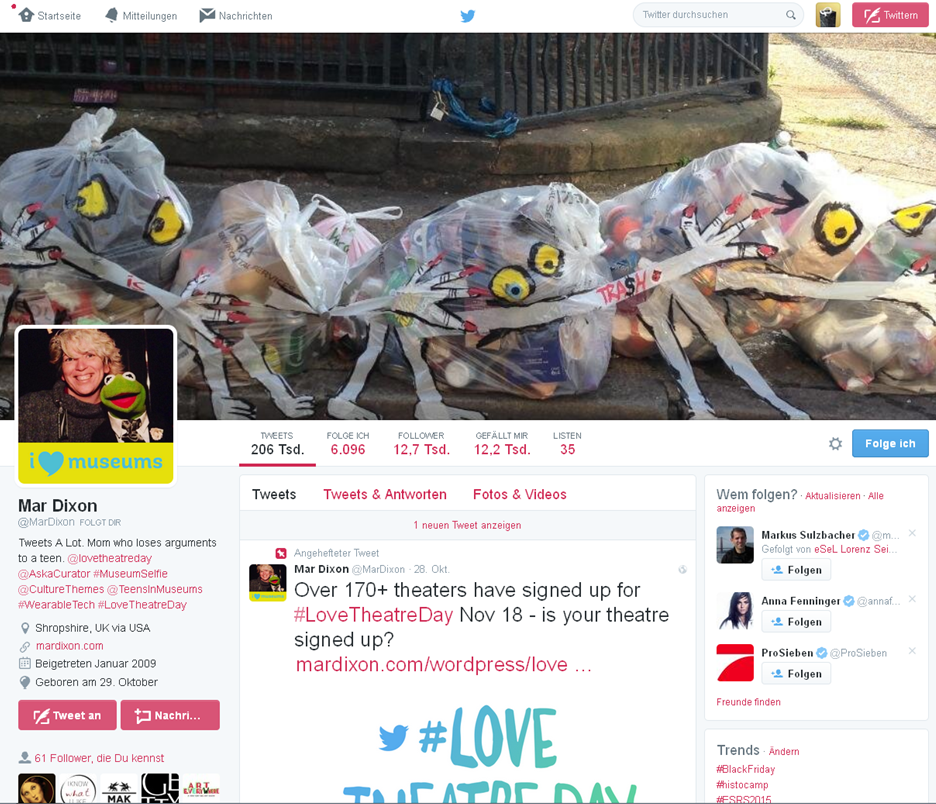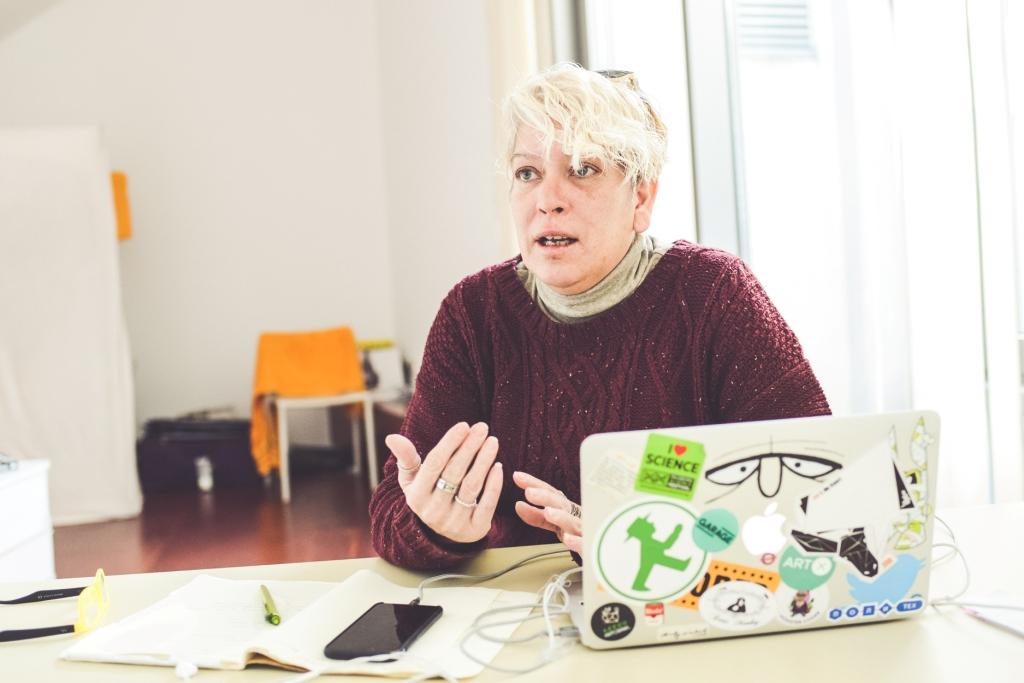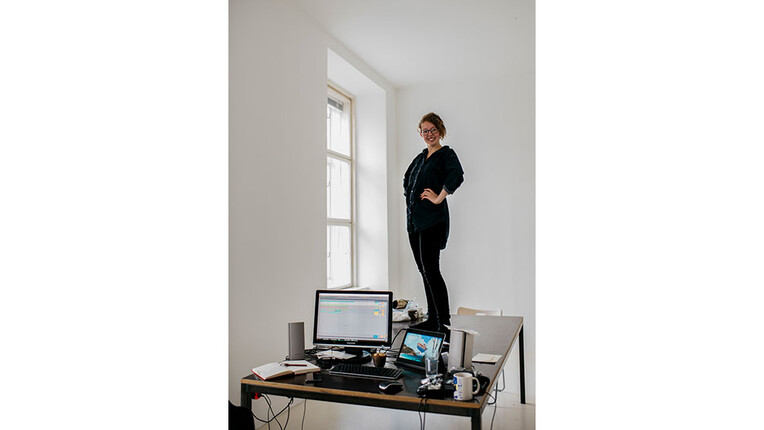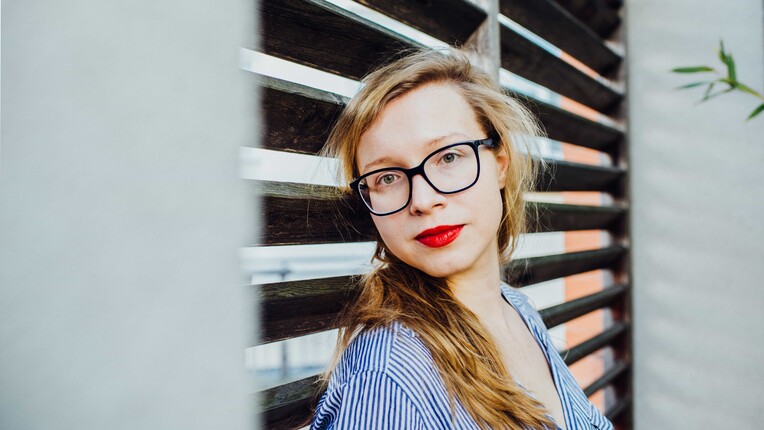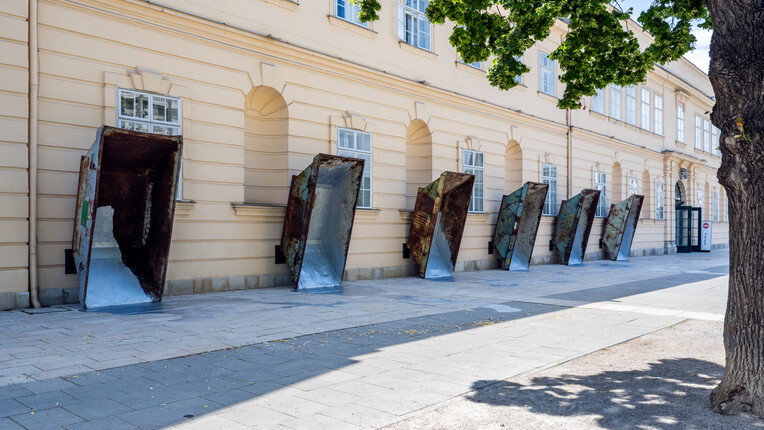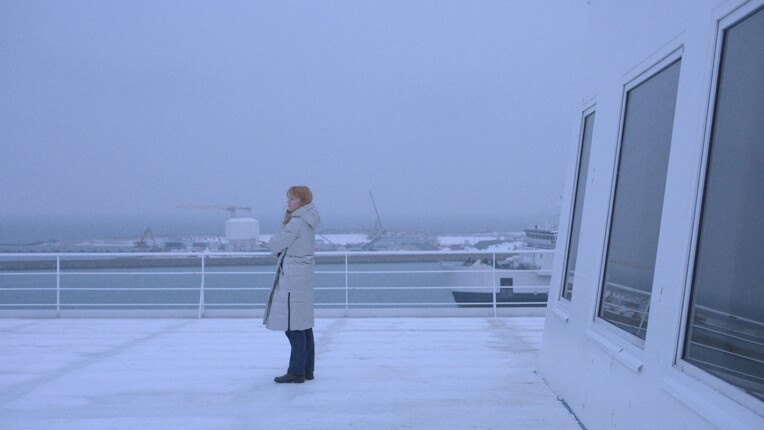
"You can't keep talking about yourself. It's not social."
Mar Dixon is a consultant in social media and audience development, who is working with the big cultural institutions in the world. She is the founder of @CultureThemes, Teens in Museums and MuseumCamp. We met the Artist-in-Residence at Q21 in her studio to talk about Viennese people's difficulties with sharing ideas and building communities. And she gets straight to the point: We want content! And museums aren’t giving us that.
Mar Dixon is a consultant in social media and audience development, who is working with the big cultural institutions in the world. She is the founder of @CultureThemes, Teens in Museums and MuseumCamp. We met the Artist-in-Residence at Q21 in her studio to talk about Viennese people's difficulties with sharing ideas and building communities. And she gets straight to the point: We want content! And museums aren’t giving us that.
How would you describe yourself in 3 Hashtags?
#disruptive, #troublemaker, #caring
Why are you a troublemaker?
I have the advantage of not working in a museum so I can be more honest and frank with suggestions and I get away with a lot more stuff than probably if I did work in a museum. What I hope I do is causing waves for people to get them to think.
Do museums pay you to think for them?
I don’t get paid for the stuff I do online (@CultureThemes). When people see my skills on social media, they hire me. Some of the work I do is non-disclosure so I can’t talk about what I do. I guess museums don’t want to be seen as needing help. I also do a lot with audience development and technology etc.
How did you become a social media queen?
I don’t know! I think it was just the right timing for me. I started off at the attorney general‘s office in New Jersey and eventually I became a network administrator so I always was online. When I moved to the UK, I had my daughter Charlotte. I was taking her to the museums and I didn’t really like what I was seeing. I didn’t want to go back and I said to myself: There’s an issue here! I just started writing about it and then social media happened. I signed up to Facebook and Twitter, because it was there. Four or five years ago a lot of cuts happened, internationally, but mainly in the UK. Museums were complaining about it online. I wondered: You want me to go and visit you but you’re crying? No, I’m not going to visit to you. That was when I started to work on @CultureThemes. I just thought let’s get a positive hashtag once a month were people get involved in it and it’s a snowball from there. I think I’ve been word trending now about nine times. I don’t do the hastags to get popularity I do it for the museums and the public to get involved.
Speaking of involvement: You held a MuseumCamp as part of the Vienna Art Week. There you mentioned that in Vienna the uptake to social media is slow. Why is that?
I’ve been talking a lot to museums and other people here and the issue seems to be the directors don’t get social media so they are not enforcing it in their museums. It’s a huge mistake they are making. They don’t need to have a team to do this, but at least there should be the presence on the channels, so that if I go there I can tweet about it, I can use Instagram and Facebook, tag them and show people that. Vienna is a wonderful tourist city. It’s a beautiful city anyway, it has many museums with a lot of tours, but there are a lot of people coming from other countries who want to use social media and can’t, because there is no channel for that to happen. That needs to change. The first thing that has to change is that museum people actually have to talk to each other – and they don’t. Not even in real life.
Vienna is not only digitally at back, but also in real life, community-building-wise?
I’ve been trying to figure that out, to figure out a strategy that maybe can help. One thing that we did in London, me and my friend Will, who is working at theScience Museum. When he started there he asked me to introduce me to some social media people. He is right in London and I said: Go out your door! Three steps to your right you got like four museums around you. Being British they don’t do that. So once a month we have something we call DrinksThing. It is a meeting not just for museum people and it’s not about work, it’s about socializing. It started with a few people and now we have like 80 people coming every month. Being consistent was one thing we had to do. I’m working with a couple of museums here and I tell them that this has to happen. Two people I talked to will bring this up. There’s a StARTcamp taking place on December 10th and they’re going to announce that monthly thing there.
I attended a StARTcamp once, but it was „Meh“.
I heard that there were mainly people to sell stuff.
True.
Stop that by saying: No selling allowed.If you wanna sell, you sponsor us and you can have a stand. I know, being an obnoxious American makes my attitude a little bit different. I’m not afraid to say No to people. Whereas with the Brits and you guys, you are so reserved… I just come out and say it.
What if people feel competition and don’t want to share ideas?
But you get more momentum in a group. Why not sharing? I do hashtags once a month and British Museum or the Historical Palaces in Russia get involved in it. I could really name drop so many museums internationally but they get it. They get that being part is important. I'm sorry if it might be time consuming but so many museums/galleries have told me it got them known. Plus, it’s not about whose idea that is. The collective group makes it a lot louder than just me saying we’re going to do this. You can’t keep talking about yourself, it’s not social.
What is the good of Twitter initiatives like #Askacurator Day?
#AskACurator (which was started by Jim Richardson) is unique, because curators – god bless them – can’t narrate anything small. Their descriptions are always like four pages long and I’m asking them on Twitter to get it in 140 characters. Originally they didn’t like it, they were threatened by it, but over the years curators created Twitter accounts to take over the conversations and keep going. Some of them also started Blogs, because they realized that they actually have knowledge people care about. That’s the behind the scenes stuff that we want to know about. For the public it’s great, because somebody in Pennsylvania might be able to talk to somebody in the Albertina Museum here in Vienna. He might never get here but at least they can have that conversation and that museum then gets a new advocate.
What are the channels, formats or Apps museums and cultural initiatives should use?
It depends on your collection and what you’re offering. Twitter is used by the public but mainly used by museums and colleagues to talk to each other. Instagram is all about the picture sharing and the hashtags. If you have a good enough collection then Instagram would be better. I always suggest Facebook, because with a billion people on it you can’t not be on it.
Isn‘t Facebook dying?
No!
We have lots of 13 year old school kids here. They visit Q21 within guided tours and we like to ask them what channels they use. Almost no one uses Facebook, everyone WhatsApp and Instagram.
I totally agree. My daughter has had a Facebook account and she never used it.
They say their grandmothers use it.
Right, but their grandmums and mums are on it and they are probably the ones paying the ticket to the museum. It’s important that you have a presence there and mostly stuff that you put on Instagram or Twitter can easily just go onto Facebook anyway, so it’s not an added layer – or it shouldn’t be. It’s really hard to say what that one solution is, because it really depends on what the situation is and who you are. And also your staff: Do they feel comfortable in using that? I can’t figure out Snapchat. My daughter is on that she absolutely loves it, but I can’t figure it out, I stay away from it. But I don’t not recommend it. If you got young kids coming in then yeah, get on Snapchat.
Do you think today’s teenagers are going to sign up to Facebook when they are older?
I don’t know. I’ve noticed some colleges and universities are using it as a platform to share documents. I think when they get older, they might be forced to use it. It’s one of the top social media channels out there and the kids are on it. They use it as a message board to talk to people. My daughter never hardly ever posts on Instagram or Facebook, but she’s on it and she uses it because she talks to her friends that way. I think the media overplays the fact that kids are leaving facebook. They’re not. We have to be careful about listening too much to what the media thinks.
Is art and the auratic experience of art in danger because of Selfiesticks and #Artselfies?
I get into so many arguments about that. We have to face the fact that we’re competing with movie theatres, Netflix, amusement parks and shopping malls. If I go to a museum and I don’t study an art piece for three minutes – who cares? Also, if I want to go and just eat in the cafe and leave, that should be good enough for you. There’s a huge trend from the role of the museums as academic research centers – as which they were built up to be, especially in Victorian times – into the emotive era we're now needing and wanting. We want stories, we want to know what is behind that picture, why it was brought and what the painter was thinking when he was doing that. Museums aren’t giving that to us right now as good as they could. If I want to go there and take a selfie, because I like the picture and that’s my memory – who are you to say that’s good or bad? The fact that I’m there should be enough for you. If you judge us when we’re in there, we’re not going to go back in. There needs to be less of these worries. We’re not dumbing down, we’re dumbing up (like Silvia Filippini at the IMA in the states says) as a society by allowing the exposure, because a lot happens with that exposure.
But: I HATE selfiesticks. I hate them inside. Outside, do whatever you want, inside I just find them noxious.
The white cube behavior has something religious, maybe that’s why it offends or irritates some people, that this is changing.
Yeah, but look how people are leaving the church!
This all refers to the change the recipients go through, but what is happening with the art pieces?
They get more exposure. If I took a picture of an art painting and someone’s asking me where that is from, I’d say it was at the Leopold Museum. That just gave them a new friend. We still have artists who are making, a lot of contemporary art, classical art, that’s not the worry. The worry is how we are getting that to the people.
What are the big challenges of the museum or art initiative of the future?
The challenge is money, money, money. Money is getting less and less. The other challenge would be our shrinking of the attention span. Museums haven’t figured out that shift yet. If they don’t make these shifts now, 2020 is going to be very difficult. Wearable technology is the next thing that is happening now. People are wearing fitbits, they are wearing smart watches, they got all that technology on them already and we’re not doing any research of how we can implement that into the museum. I’m not saying we have to, but the public is bringing it and they should know that we’re at least trying to deal with that. Technology is not going away.
Do you see any dangers in the smart technologies of today?
What I do don’t like, what I really hate, are Apps. If a museum creates an App – who is downloading it? Your own staff probably isn’t downloading it. We have the Apps we like. There are very few museum Apps that work and are worthwhile. Why are you wasting your resources on it? You have to get a HTML5 Website which is smart phone friendly and that’s just as good. Make sure your website is good also. And I have to add that a good WordPress site using your CMS should be efficient and not as expensive as many assume.
Do you sometimes dream of Hashtags?
No. I sometimes don’t sleep because of Hashtags.
Mar Dixon is Artist-in-Residence at Q21, recommended by esel.at
Follow her on Twitter: @MarDixon
Follow her on Instagram: @mardixonpic
Interview: Margit Mössmer, Twitter: @margit_moer
Photographs: © Eva Ellersdorfer-Meissnerová
